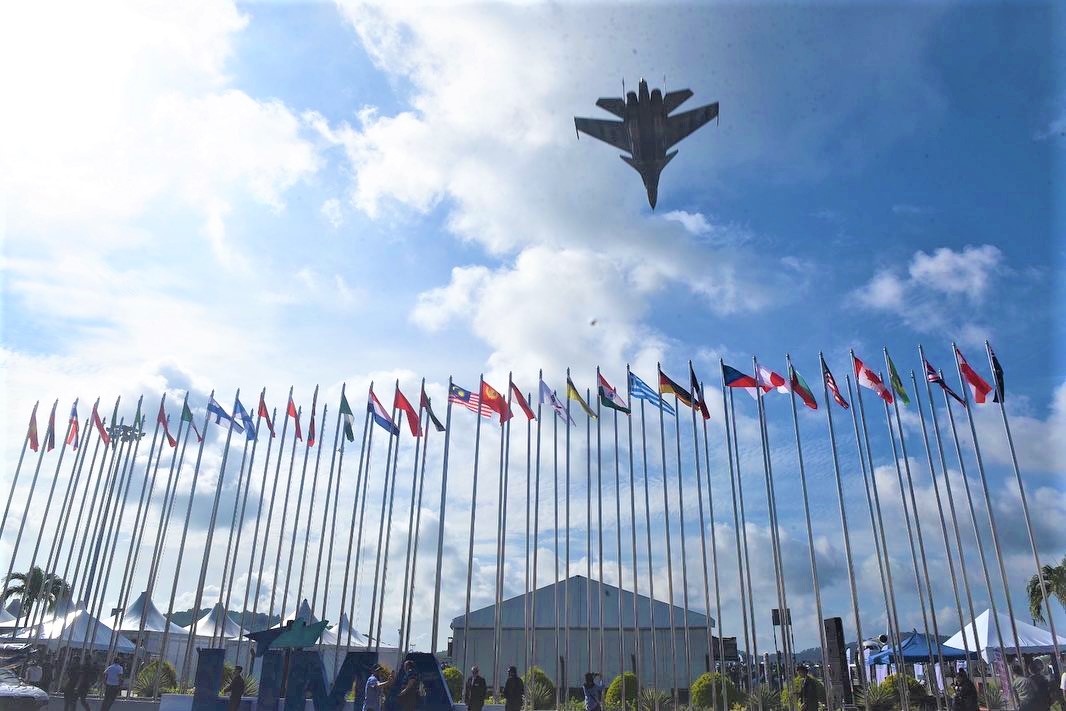With just a week to go, the Langkawi International Maritime and Aerospace Exhibition (LIMA) 2025 is shaping up to be one of the most geopolitically-charged editions of the biennial exhibition.
Against the backdrop of ethnic cleansing in Gaza, the Indo-Pak conflict, the ongoing Russia–Ukraine war, and China’s growing assertiveness in the South China Sea, the 17th edition of LIMA, from May 20-24, is likely to be less about showcasing cutting-edge defence technology and multi-billion-dollar deals, and more about muscle-flexing and a show of force.
Among the confirmed participants are the Russian Knights and India’s Surya Kiran aerobatic teams – both from nations currently embroiled in conflict. Russia is believed to have between 1,800 and 2,400 frontline combat pilots. Despite its losses in Ukraine, Moscow has maintained its global military commitments. The likelihood of the Russian Knights pulling out at the eleventh hour remains low.
Surya Kiran’s inclusion, however, remains tentative. The unit comprises highly experienced, high-hour aviators – the kind most needed in combat. With three IAF jets already downed in the current conflict – a Rafale, a MiG-29, and a Su-30MKI – there’s growing concern that these display pilots may be pulled back as attrition replacements, since India has roughly 600 combat pilots. If the Indo-Pak hostilities escalate further, their participation in LIMA could well become a casualty of war.
Meanwhile, the escalating trade war between the United States and China has fuelled growing military rhetoric. Washington’s increasingly belligerent tone towards Beijing, along with rising tensions in the Middle East, is stirring the drums of war. The US has deployed two nuclear-powered aircraft carriers – the USS Dwight D. Eisenhower (CVN-69) and USS Theodore Roosevelt (CVN-71) – to the Red Sea, in support of Israel’s campaign against Yemen and Lebanon, while also serving as potential launch platforms for operations against Iran.
In the South China Sea, the US has ramped up its deployments under the banner of ‘freedom of navigation’ exercises. B-52 Stratofortress and B-2 Spirit bombers have been deployed to Guam, while bases in Kadena and Iwakuni in Japan are experiencing heightened operational tempo and joint exercises involving allies Japan and South Korea.
As part of this show of force and ‘flex’, a B-52 is scheduled to perform a flyby, followed by a formation of Boeing F/A-18E/F Super Hornets on the first day of the show. While neither aircraft is directly participating in LIMA ’25, the messaging is anything but subtle. The presence of the ‘Buff’ and the carrier-based strike fighters is a deliberate signal – not just to China, but to regional partners who are either upgrading their arsenals or recalibrating alliances in light of shifting power dynamics.
But all eyes will likely be on the Su-57 ‘Felon’, Russia’s answer to the American fifth-generation monopoly. Its highly anticipated appearance marks the first time the stealth jet will be seen in this part of the world, and Moscow’s decision to bring it to Langkawi is as strategic as it is symbolic. It’s a signal of presence – a reminder that despite sanctions and battlefield attrition, Russia remains a contender in the global arms theatre.
Not to be outdone, the United States is sending both the F-22 Raptor – the world’s first fifth-generation fighter – and the F-35 Lightning II, its much-hyped multirole joint strike fighter. Their presence sets up a rare ‘fifth-gen showdown’ on neutral turf, with the Felon, Raptor and Lightning all in close proximity – a tantalising prospect for regional air force planners.
The regional arms race is already well underway. The Philippines is in the midst of a sweeping modernisation programme that includes the FA-50 and planned procurement of multirole fighters. Singapore’s RSAF is gearing up to introduce the F-35 into service, likely making it the first Southeast Asian nation with fifth-gen capabilities. Indonesia, meanwhile, has announced a major fighter acquisition programme – eyeing a mix of Dassault Rafales and a confirmed order of F-15EXs, marking a return to American airpower platforms as Jakarta seeks to reinforce air sovereignty and project power across its sprawling archipelago.
Aircraft types may vary, but the trend is clear: More nations are investing in stealth, long-range precision weapons, network-centric operations, and platforms that offer both reach and survivability. It’s less about numerical superiority and more about strategic effect – a shift from mass to agility, from dominance to deterrence.
Unmanned systems are also taking centre stage. The region’s acceptance of UAVs, UCAVs and UCVs has gone from experimental to operational in less than a decade. Singapore leads in the maritime domain with its Uncrewed Combat Vessels, while Malaysia and Indonesia have made UAV integration a core part of border patrol and ISR (Intelligence, Surveillance, Reconnaissance) missions. Tactical UAVs – both fixed-wing and rotary – are gaining traction in Thailand and Vietnam, providing real-time ISR data and loitering strike capabilities across diverse terrain.
What’s more, the unmanned ecosystem on show at LIMA ’25 will reflect a doctrinal evolution – one centred on autonomy, speed, and adaptability. AI-enabled drones, autonomous targeting systems, and hybrid swarming platforms for maritime and urban operations will take the spotlight. These systems represent a shift towards ‘human-light’ configurations, with reduced personnel exposure and increased mission tempo. In an era of shrinking manpower and expanding battlespace, precision-guided, unmanned systems are no longer just force multipliers – they are becoming the force itself.
As LIMA ’25 draws near, it’s clear this edition won’t just be about what’s on display – but what it represents: A rapidly changing region, an increasingly multipolar world, and a front-row seat to the evolution of air power in all its forms.
